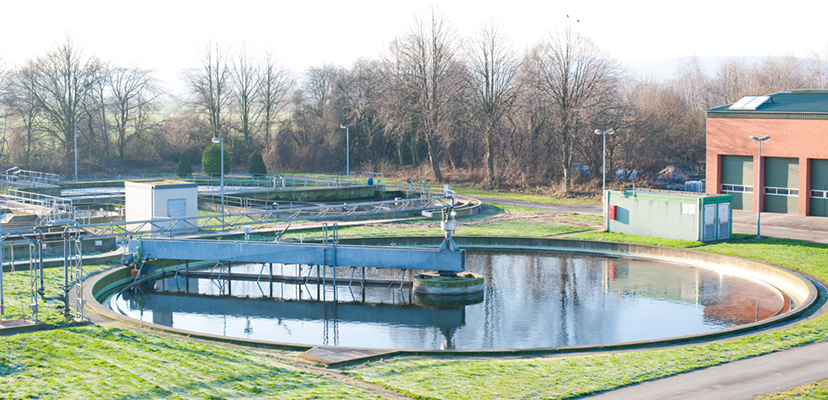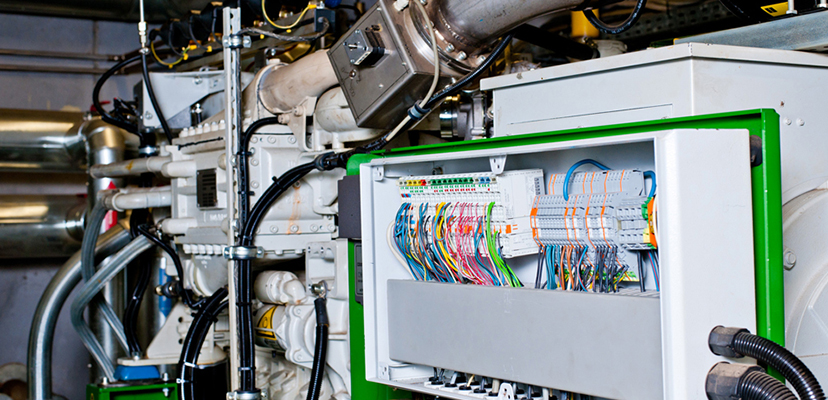


By using so-called deammoniafication, the facility in Rinteln belongs to the German pioneers in the field of biological conversion of ammonium into molecular nitrogen.
Because the process demands especially precise automation, the WAGO-I/O-SYSTEM 750 is used. The open interface simplifies the integration of various types of sensors and signals used at Rinteln into the control network. An additional advantage: The I/O system is designed for decentralized architecture and distributed control intelligence, which improves the plant safety for the wastewater operation.
By using thickeners and centrifuges, wastewater plants reduce the volume of digested sludge. The centrate and turbid water flowing out of this process have a high concentration of ammonium-nitrogen. Instead of feeding this side stream back to the biological purification step of the wastewater plant as an internal waste stream, separate treatment in discrete reactors has been demonstrated to be significantly more effective, both ecologically and economically.
Stringent Requirements
“The so-called sequencing batch reactor can be compared to a small, highly-specialized wastewater treatment system, which in our case is surrounded by a larger one,” explains Peter Koller, Plant Supervisor for the facility in Rinteln. In the context of increasingly stringent thresholds for discharge values for wastewater plants, nitrogen has attained a special importance in Rinteln, primarily because the wastewater coming from local industries has a high organic load.
In a process chain that must be exactly controlled, bacteria convert the ammonium into gaseous molecular nitrogen in the reactor tank. In 2009, the decision was made to try using new methods in the field – initially a mobile pilot unit was tested, then the SB reactor was incorporated. It was an easy decision to use WAGO modules for the automation as well as for linking the complex measuring computer via Modbus RTU. The community operation had already had good experiences over a series of retrofitting projects. Using automation solutions from Minden, they had already updated the control system from a discontinued S5 system using INTERBUS communication to the current state of technology.
Logical Modules
Around six years ago, the wastewater plant began retrofitting work, and went looking for a new control system in this context. The modernization of a screw pumping plant using the WAGO-I/O-SYSTEM ran so smoothly and easily, “that we could almost complete the work ourselves,” according to Koller. The coherent module system was so convincing; it was something that could be easily expanded and converted “and would just work.”
Simon Lübbing from the eponymous automation and system engineering firm incorporated the I/O system into the plant, completing the conversion without causing interruptions in operation. As an example, the ICA engineer cited the conversion of a pumping plant facility, used for storm water, flood, and raw sewage, which had ancient controls for which adequate replacement parts could no longer be found. The system, which is designed as protection against flooding on the Weser as well as heavy rainfall, has, at its maximum level, three cascaded pumps switched in series. “We converted to WAGO automation in stages,” explains Lübbing, referring to the decentrally installed automation. In comparison to the previous, central structure, “the failure of one controller can no longer bring the entire system down.”
Web-based Visualization
Access to the pumps takes place from the control room in Rinteln using the network – and indeed it is quite easy using a Web browser. The primary visual display is, like the pumps, divided in thirds and shows all parameters relevant for safe operation at a glance. These include, for example, output, current, voltage, effective power, and type of operation. With a single click of the mouse, the operators can access the underlying software layer and can change the type of operation, acknowledge faults, analyze alarms, warnings, and parameters, and monitor any vibrations that occur in the pumps. The operating status is an important indicator for “how the pumps are doing,” as Koller explains in light of their importance for flood protection as it relates to security for the wastewater facility. “We’re sitting in the middle of a flood plain. That is why the entire facility is surrounded by a dike.”
Vibration analysis leads to condition monitoring, which again ties back into the core of the system regulation. Technically, the vibration strength and rolling bearing monitoring was realized as a cost effective solution, also using the WAGO-I/O-SYSTEM, which processes the data from the sensors mounted directly in the system, regardless of whether they are digital or analog signals between 4 and 20 mA.
At these and many other points, a glance from on high shows that the I/O system consistently forms the interface between various systems and the measuring concept for the process technology.
Instead of “operating and observing” the wastewater treatment processes via a central server as in the past, Lübbing Elektrotechnik GmbH uses the visualization already present in the controllers for the I/O system. The divided Web browser-based visualization has another advantage: If the processes are changed, then only the visualization directly affected has to be adjusted. In the past, the facility had to spend quite a bit of money for time-consuming programming of the corresponding functions into the central server.
Conclusion:
Text: Kay Miller, WAGO
Photo: © PantherMedia/Dzianis Miraniuk, WAGO